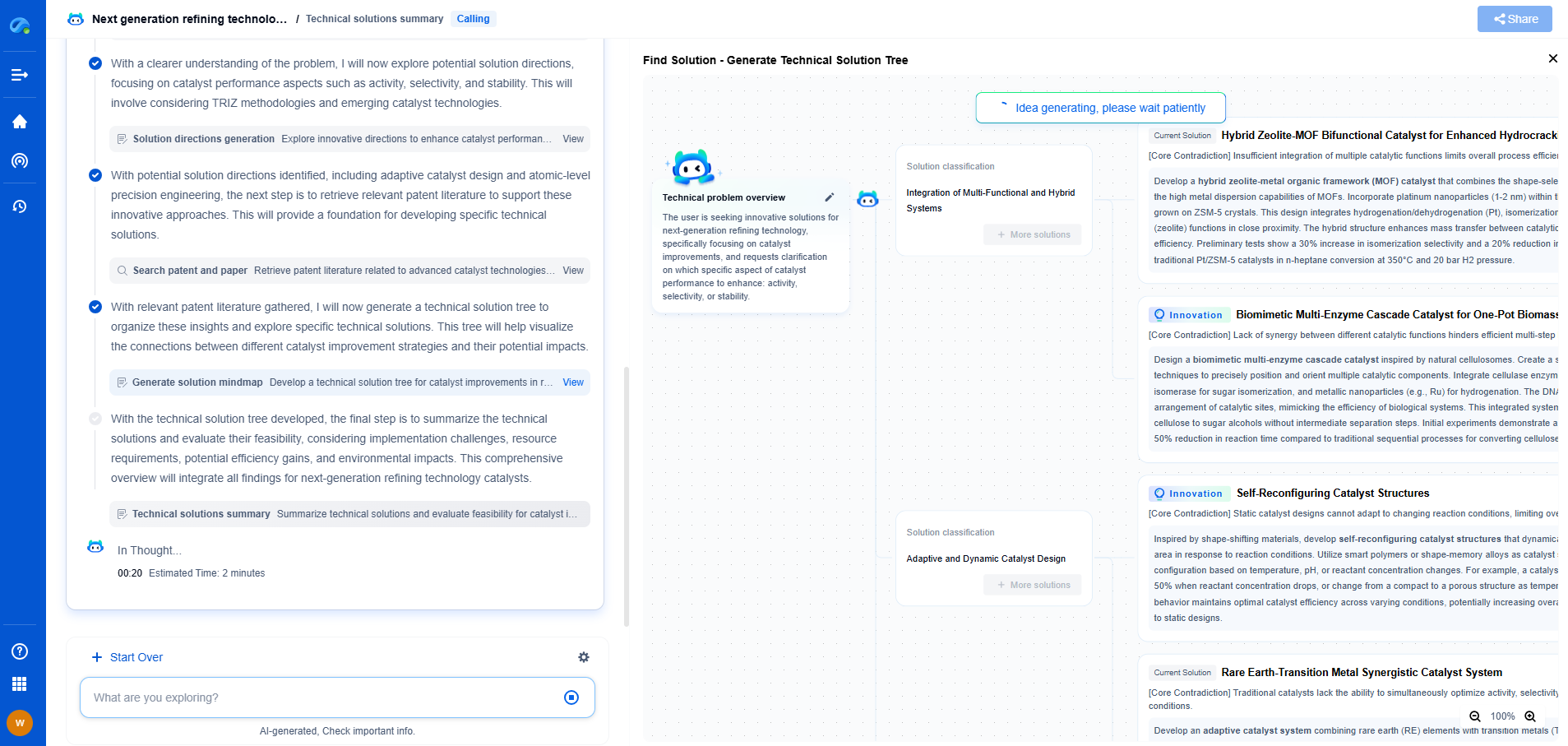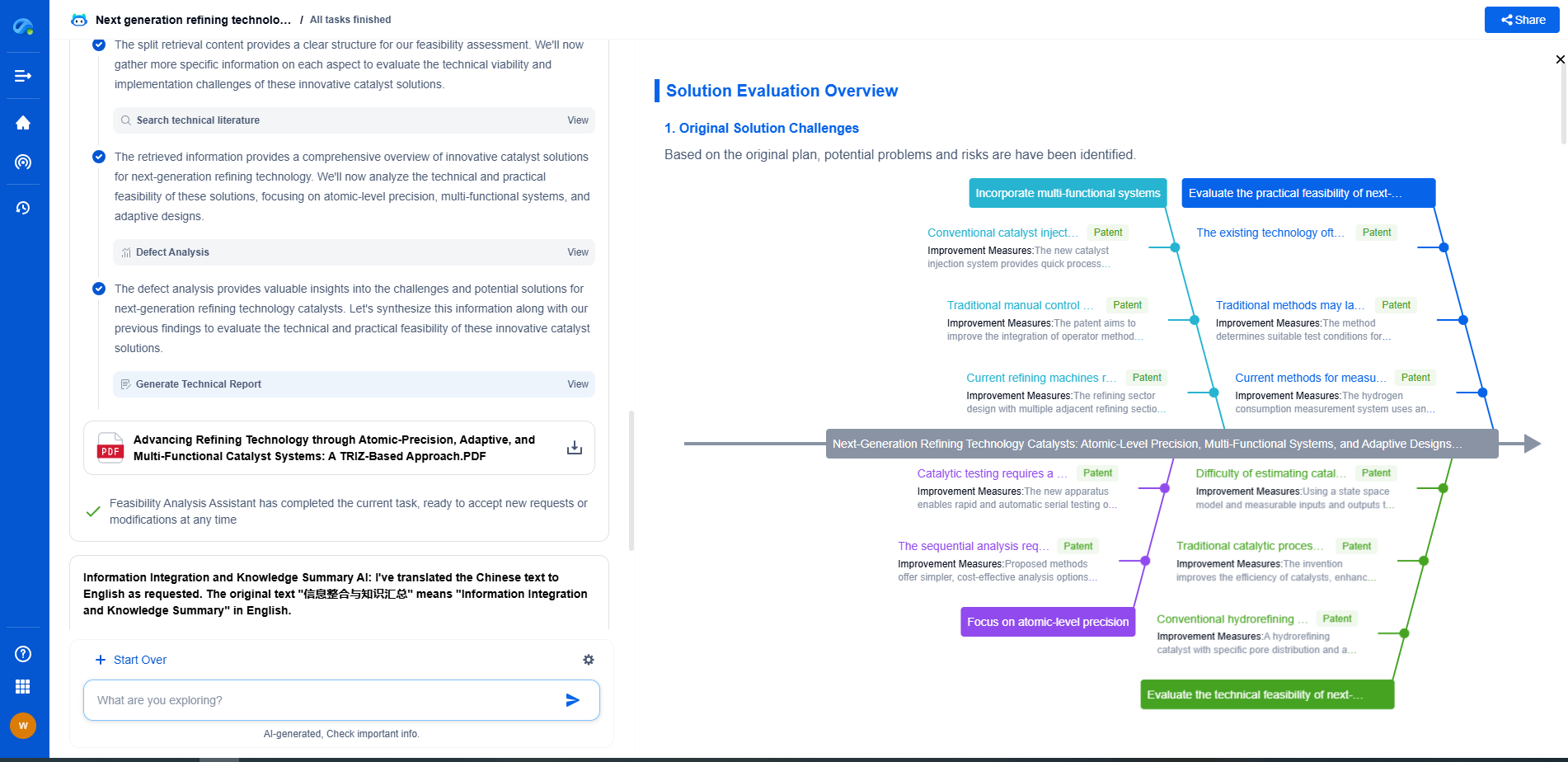Road-Integrated PV (RIPV): Will Solar Highways Ever Be Practical?
JUL 22, 2025 |
As the world continues its pursuit of sustainable energy solutions, the concept of Road-Integrated Photovoltaics (RIPV) has emerged as an innovative idea. The vision of solar highways promises to harness solar energy by embedding photovoltaic cells directly into the road surfaces. This ambitious concept raises several questions about its practicality, efficiency, and potential impact on the future of renewable energy. In this blog, we will explore the current state of RIPV technology, its challenges, and its prospects for transforming the way we think about energy and infrastructure.
The Concept of Solar Highways
Solar highways are designed to convert existing roadways into energy-generating surfaces by integrating photovoltaic cells into the pavement. The idea is to utilize the vast expanse of road networks that sit under the sun daily. By doing so, it could transform these otherwise idle surfaces into a decentralized network of solar power stations, providing a renewable energy source without taking up additional land area.
Current Technologies and Pilot Projects
Several pilot projects around the world have been initiated to test the feasibility of solar highways. France, for instance, launched a 1-kilometer stretch of solar road in Normandy, consisting of around 2,800 square meters of photovoltaic panels. Similarly, the Solar Roadways project in the United States has been actively working on developing modular solar panels that can be installed on roads, sidewalks, and parking lots. These projects aim to gather data on energy output, durability, and cost-effectiveness.
Challenges Facing Solar Highways
Despite the promising concept, solar highways face significant challenges that hinder their widespread adoption:
1. Durability: Roads endure heavy traffic, fluctuating weather conditions, and constant wear and tear. Ensuring that solar panels can withstand these elements while maintaining efficiency is a major engineering challenge.
2. Cost: The initial expense of installing photovoltaic panels on roads is considerably higher than traditional asphalt or concrete. Additionally, maintenance and repair costs could be substantial if panels are damaged.
3. Efficiency: Traditional solar panels are typically positioned at an optimal angle towards the sun to maximize energy capture. Road-based panels, however, lie flat, which can reduce their overall efficiency.
4. Energy Distribution: Integrating solar energy generated from roads into the existing power grid poses logistical challenges. Efficiently managing and distributing this energy requires substantial infrastructure development.
Potential Benefits
If these challenges can be overcome, the potential benefits of solar highways are significant:
1. Renewable Energy Generation: Solar highways could provide a substantial amount of clean energy without the need for additional land, contributing to a reduction in carbon emissions.
2. Multi-functional Infrastructure: Beyond energy generation, solar roads could be equipped with LED lights for road markings, heating elements to melt snow, or sensors to improve traffic management.
3. Economic Opportunities: The development and installation of solar roads could stimulate economic growth by creating new jobs in manufacturing, installation, and maintenance.
The Road Ahead
While solar highways present an exciting frontier in sustainable energy, the technology is still in its nascent stages. Continued research and development, coupled with successful pilot projects, will be crucial in addressing the current challenges. Collaboration between governments, private companies, and research institutions will be essential in advancing the technology and making solar highways a practical reality.
Conclusion
Solar highways represent an innovative step towards integrating renewable energy into our everyday infrastructure. While the road to practicality is fraught with challenges, the potential benefits make it a worthy pursuit. As technology advances and our understanding of RIPV improves, solar highways could one day become a key component of our sustainable energy landscape, paving the way for a cleaner, greener future.
As solar technology races ahead—from perovskite cells to tandem architectures, from anti-reflective coatings to transparent electrodes—staying on top of fast-moving innovation has become a strategic imperative.
Patsnap Eureka, our intelligent AI assistant built for R&D professionals in high-tech sectors, empowers you with real-time expert-level analysis, technology roadmap exploration, and strategic mapping of core patents—all within a seamless, user-friendly interface.
⚡ Ready to accelerate your solar innovation journey? Try Patsnap Eureka today and let AI help you harness the full power of the sun—and your IP strategy.
- R&D
- Intellectual Property
- Life Sciences
- Materials
- Tech Scout
- Unparalleled Data Quality
- Higher Quality Content
- 60% Fewer Hallucinations
Browse by: Latest US Patents, China's latest patents, Technical Efficacy Thesaurus, Application Domain, Technology Topic, Popular Technical Reports.
© 2025 PatSnap. All rights reserved.Legal|Privacy policy|Modern Slavery Act Transparency Statement|Sitemap|About US| Contact US: help@patsnap.com

